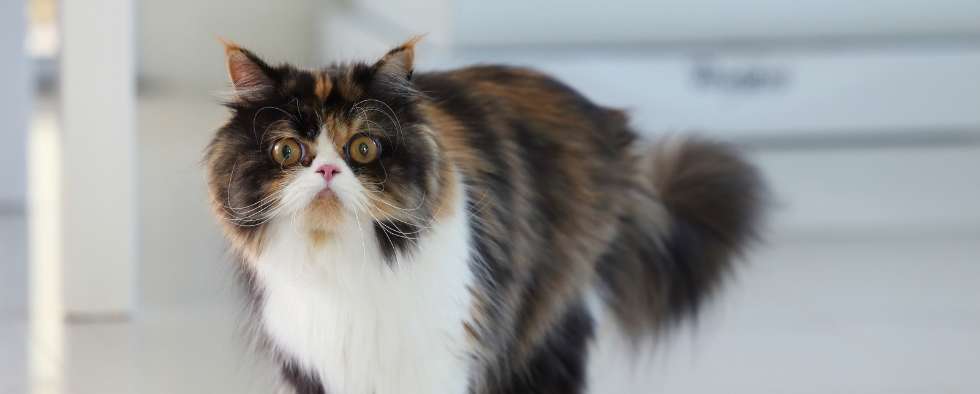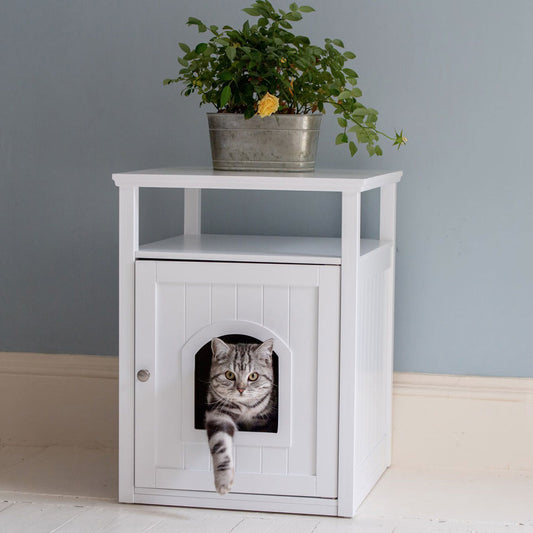We are all familiar with the distinct looks of the Persian breed; their large round eyes and dense long fur being the two main features. Generally a quiet breed, they are extremely popular pets and suit an indoor lifestyle. They tend to be very close to their owners, the epitome of a lap cat, and also tend to be friendly towards strangers. This agreeable personality and cute good looks mean they are the 3rd and 5th most popular cat breeds in the USA and UK respectively. Here we take a closer look at the Persian and consider all the things you’ll need if you’re thinking of making a Persian your next pet!
The History of the Persian Breed
There's no doubt about it, Persians are one of the oldest domesticated cat breeds. It is not fully clear when Persians first appeared, but the first documented ancestor of this long-haired cat was in Italy in 1620. Recent research has found that present day Persians are in fact descended from cats bred in Western Europe rather than their Near Eastern cousins.
Today there are two main types of Persian: the traditional or Doll-face and the Peke-face and ultra type. The Doll-Face is essentially the most traditional of the breed, without the extreme features of the more recently developed, flat-faced peke-face and ultra types. In general the former are more popular amongst pet owners and the latter more favoured by those who show their cats.
What Should I Get for My Persian Kitten?
So you’ve decided to get a Persian? Congratulations are in order! If you're not sure what to buy for them though, we're here to help. Like most cats, the essentials are pretty much the same, but there is one really important factor when it comes to Persians: Grooming! They needs lots of grooming!
Take a look at our shopping list here where we make our recommendations for this beautiful breed:
Large Size Litter Tray - A large sized hooded cat litter tray is ideal to give them the room and privacy to toilet in comfort. It’s highly likely they will be indoor pets, so giving them a space to toilet in peace is a must.
Velvet Cat Bed - Persians tend to live very steady lifestyles and will be happy mainly lying around and snoozing. A cat bed that is soft and plump will ensure they have somewhere to sleep and nap when they please. Our Luxury velvet cushions are perfect as they have the good looks your Persian deserves as well as the cosy comfort!
Prescribed Diet - When planning your Persian cat’s diet you should take into consideration their typically less active lifestyle and their plush coat. Feeding a good quality food that is low in fat is often the best option and if you can find a food that promotes a healthy coat even better! If you’re unsure of where to start, it’s always a good idea to chat to your breeder and your vet. Of course cat’s are all individuals, so things like flavour may come down to your cat’s personal taste too.
Food and Water Bowl - You will need at least two bowls; one for water and one for food, a third if you're going to feed both wet and dry food. There are a number of gorgeous bowls in our shop. Which you choose will come down to personal preference.
Scratch Tree - As we’ve mentioned before, Persian’s tend to lead a less active lifestyle than many other breeds. With this in mind, offering as much opportunity to exercise and scratch indoors is a must. A tall scratch post with platform is advisable so they have somewhere to sate their scratching needs as well as lounge.
Grooming Kit - Getting the right grooming kit for Persian cats is a must. The catit longhair grooming kit is ideal as it has all the tools necessary to keep your cat’s coat in tip top condition. Persians have a fine topcoat with a very dense undercoat and ensuring you take care of the hair from root to tip is imperative. There are many guides on how to groom cats and the Catit kit itself comes with some great information. It might be worth taking your cat to a professional groomer once a month too, just to keep on top of it properly. A daily brush at least, is essential.
Cat Shampoo - You may find brushing isn’t quite enough and choose to bathe your cat as well. It shouldn’t need to be done more than once a month (unless you plan to show your cat) and if you begin bathing whilst they are a kitten they should soon get used to the routine. Animology make a great quality cat shampoo called ‘Feline Great’. This shampoo is 100% pet safe and will promote a healthy coat. Don’t forget to dry them off well so they don’t get cold.
Cat Toys - Provide your cat with a variety of cat toys so they don’t get bored. Persian cats generally lead very happy lives indoors, but this doesn’t mean they don’t ever get bored. Provide them with an environment that will stimulate their minds. As well as a scratch post give them a couple of teaser toys and some catnip mice to bat about. They may not be as playful or energetic as some other breeds, but they will definitely appreciate some fun activities around their home.
If you have any questions about our article, please do get in touch. We love to hear from you and will be happy to help in any way we can.
And on another note, don't forget to send us your pictures. We love to see pictures of your four legged friends!



























































![[color:cream]](http://www.lordsandlabradors.co.uk/cdn/shop/products/Little-Rebels-Reno-5.jpg?v=1672395858&width=533)



































